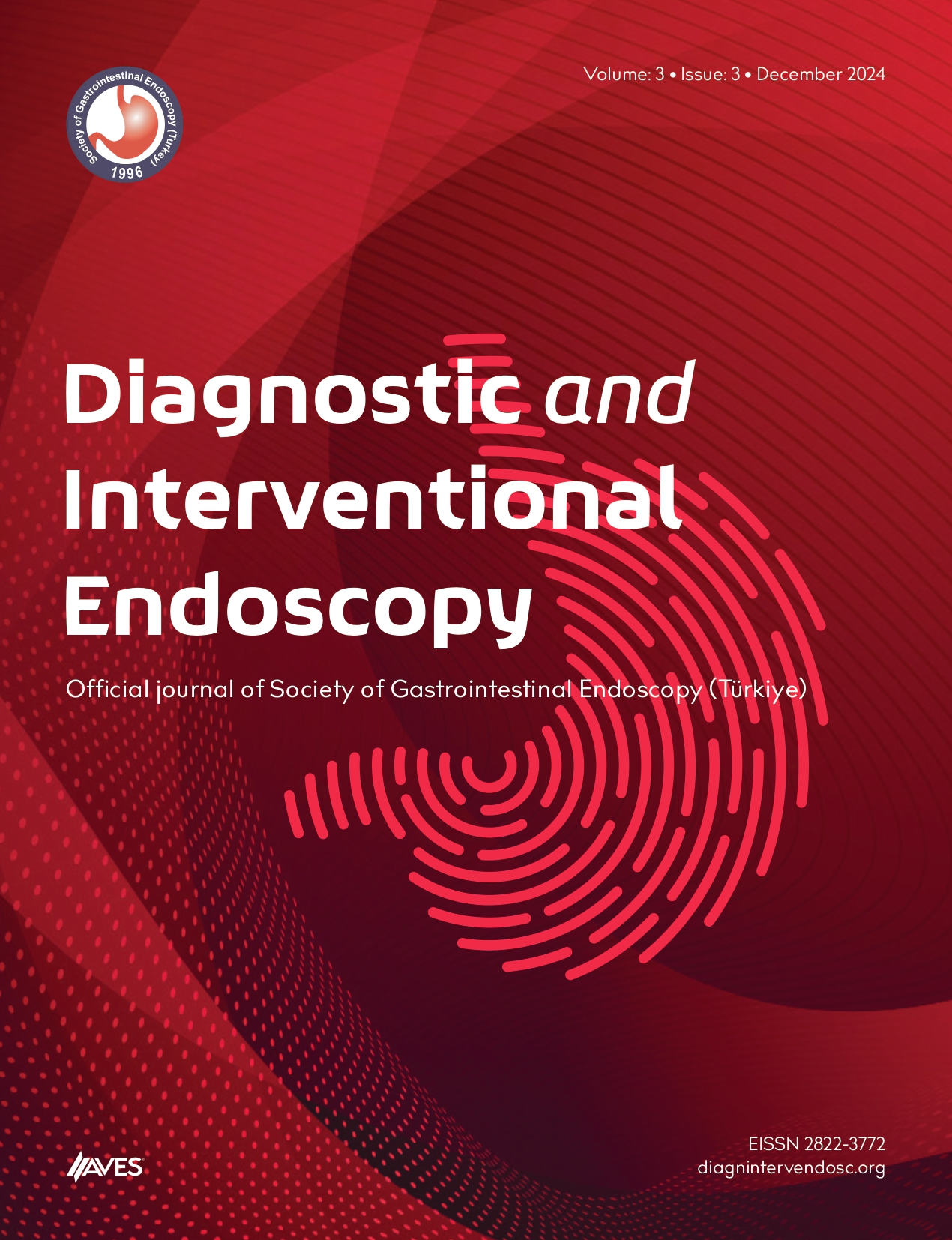Objective: We aimed to compare the effectiveness of treatments performed with either endoscopic ultrasound or duodenoscope in patients who developed a pseudocyst or walled-off necrosis after severe acute pancreatitis and to retrospectively investigate whether there is any difference between these treatment methods in terms of complications.
Methods: Patients who underwent endoscopic intervention owing to pancreatic pseudocysts and walled-off necrosis between 2010 and 2019 in our clinic were included in the study. The demographic characteristics of the patients, causes of acute pancreatitis, and characteristics of peripancreatic fluid collections were determined. Pancreatic pseudocyst or walled-off necrosis differentiation was performed using imaging methods. Technical and clinical success were evaluated separately. The necessity for repetition, number of endoscopic interventions, characteristics of the stents used, and procedure-related complications were evaluated.
Results: Fifty-nine patients who underwent endoscopic treatment for peripancreatic fluid collections were included in the study. Although 23 (38.9%) of the patients underwent endoscopic treatment with a duodenoscope, endoscopic ultrasound was preferred in 36 (61.01%) patients. There was no statistical difference between factors such as walled-off necrosis, pseudocyst distribution, lesion diameter, technical success rates, and localization among the treatment modalities. The mean number of interventions was significantly lower in patients undergoing endoscopic treatment with a duodenoscope. The complication rates were similar in the comparison of drainage with duodenoscope and endoscopic ultrasound.
Conclusion: Peripancreatic fluid collections can be treated only using a duodenoscope, especially in patients with bulging. In addition, duodenoscope-based endoscopic treatment methods can be preferred in patients with pseudocysts, with the advantage of fewer endoscopic interventions.
Cite this article as: Günay S, Çamyar H, Binicier ÖB, Alper E. Endoscopic ultrasound versus duodenoscope for management of pancreatic fluid collection. Diagn Interv Endosc. 2022;1(1):17-20.

.png)


.png)